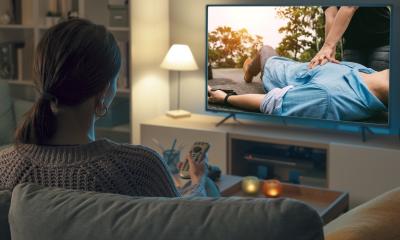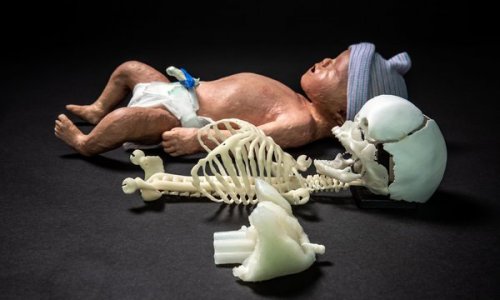Video • Improving first aid
New 3D CT scanning method shows what happens during CPR
As part of an international collaboration, researchers from Aarhus University have succeeded in developing a dynamic 3D CT scanning method that shows what happens inside the body during simulated heart massage.
Rapid first aid during cardiac arrest makes the difference between life and death. But what happens to the heart and the internal organs when people come running and begin to give well-meaning but heavy-handed heart massage as they attempt to keep the person who has suffered a cardiac arrest alive? A research collaboration between the Department of Forensic Medicine at Aarhus University and the East Midlands Forensic Pathology Unit at the University of Leicester in the UK now offers an answer to this question.
Using a new CT scanning method, the researchers show how the chest and abdominal region of a deceased person move during simulated heart massage.
"Specifically, we’ve simulated heart massage by compressing the chest of a deceased person in a controlled manner in precisely the same way as would happen with heart massage. Though with the difference that this was done gradually and in slow motion while the whole process was CT scanned at the same time," explains Kasper Hansen, assistant professor at the Department of Forensic Medicine at Aarhus University and the lead author of the study, which has been published in the scientific journal Resuscitation.

Image source: Hansen et al., Resuscitation 2020 (CC BY-NC-ND 4.0)
The method can be compared with a stop motion video production, but where each image in the video has been replaced by a complete 3D CT scan. The method reproduces the organs movements during heart massage in a very detailed way and makes it possible to perform advanced imaging analysis on the volumetric dynamic CT dataset.
According to the Danish Heart Foundation, in Denmark 5,400 people suffer cardiac arrest outside of the hospitals every year, with approx. 16% of them surviving. Although more people than previously survive thanks to stronger efforts in general resuscitation training and improved rehabilitation, there is still room for improvement in resuscitation techniques and procedures. Kasper Hansen hopes that this is where the new CT scanning method will prove useful. "The goal of heart massage is blood circulation, but we don't know enough about how the blood is pumped onwards, and why certain characteristic heart massage injuries such as lesions on the internal organs occur," he says.
"There are many unknowns in connection with resuscitation. The new technique makes it possible to examine different aspects of heart massage. Using the method allows us to directly study the organ movements, and may help to clarify the basis for important physiological mechanisms. Because the scans have been carried out on a deceased person, it hasn’t been possible to measure the blood flow directly. However, the method clearly demonstrates how, for example, the heart is affected during heart massage, and we can therefore gain a better understanding of the critical mechanisms during heart massage," says Kasper Hansen.
In connection with the scientific publication, the study presents five videos that have been exported with so-called predefined display settings from the specialised imaging software. "Specialised radiological software is needed to be able to utilise and show the full potential of the method and what it can deliver. In the article we therefore use the videos as a practical and known format to communicate how our new method is able to contribute to creating new insight into different elements of heart massage for experts within the field. Furthermore, we believe that anyone who has completed a first aid course will be able to relate to the videos. So we also hope that these videos will be fully utilised in the general first aid courses," says Kasper Hansen. "Our results are a fine example of how research on the deceased can help the living, which is a mantra within forensic medicine research all over the world. The relatives of the deceased person used in this study have agreed to the experiment being carried out and to the publication of the results.” This is of invaluable importance for this type of research, he emphasises. "It helps to bring us closer to our goal, which is for the method we present in the study to contribute to the development of better and more effective procedures for the treatment of cardiac arrest – and in this way to more people surviving a cardiac arrest."
Source: Aarhus University
09.08.2020











